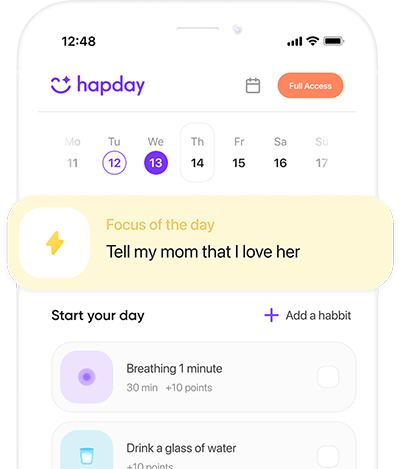Cognitive Behavioral Therapy (CBT) is a structured approach designed to help people identify, understand, and change problematic thoughts, feelings, and behaviors. It’s one of the most researched and effective therapies for issues like anxiety, depression, OCD, PTSD, and everyday stress. But the beauty of CBT is that it’s not limited to therapy sessions—CBT techniques are practical tools anyone can use to improve their mindset and emotional resilience.
Here, we’ll dive deeply into eight core CBT techniques, breaking down how they work and how to apply them in your own life for positive, lasting change.
1. Identifying and Challenging Cognitive Distortions: Reframing Negative Thoughts
We all have cognitive distortions from time to time—habits of thinking that make situations seem worse than they really are. Cognitive distortions often operate on autopilot, triggering thoughts that feel real but don’t reflect reality. Common cognitive distortions include:
- Catastrophizing: Jumping to the worst possible outcome, like assuming you’ll fail an interview before you even walk in.
- All-or-Nothing Thinking: Viewing situations as entirely good or bad, with no middle ground (e.g., “If I don’t ace this project, I’m a complete failure”).
- Overgeneralization: Making broad assumptions based on a single experience, like believing “I always mess things up” after one mistake.
Identifying these distortions is the first step to breaking the cycle, helping you shift your mindset and become more flexible in your thinking.
How to Challenge Cognitive Distortions:
- Notice the Thought: When you feel a negative emotion, take a moment to write down the thought causing it.
- Examine Its Accuracy: Ask yourself if this thought is 100% true. What’s the evidence for and against it?
- Reframe the Thought: Try replacing the distortion with a more balanced thought. For example, “I may not know everything, but I’m capable of learning.”
Example: Imagine you’re preparing for a presentation and think, “If I mess this up, everyone will see I’m terrible at my job.” Try reframing it to, “I’m prepared, and even if I make a mistake, it won’t define my entire career.”
With practice, challenging cognitive distortions can help you replace unhelpful thoughts with ones that are grounded and realistic.
2. The ABC Model: Understanding Beliefs and Reactions
The ABC Model is a powerful technique in CBT that helps you break down situations into their core components to understand how thoughts and beliefs shape your reactions. By analyzing situations with this model, you can adjust your beliefs to reduce negative emotional responses.
- A – Activating Event: Identify the event that triggered your reaction.
- B – Belief: Write down the belief or interpretation tied to this event.
- C – Consequence: Note the emotional and behavioral outcome of that belief.
When you examine situations through the ABC Model, you’re able to spot the beliefs driving your reactions, allowing you to adjust them to feel less reactive and more in control.
Example of the ABC Model:
Suppose you get constructive criticism at work (Activating Event) and your belief is, “My boss thinks I’m incompetent” (Belief). The consequence of this belief might be feelings of shame, self-doubt, or even anger (Consequence). By identifying this belief, you can reframe it to something more balanced, like “My boss sees areas where I can improve,” which can lead to feeling motivated rather than defeated.
Research shows that the ABC Model helps reduce stress by breaking down complex emotions and making it easier to tackle unhelpful beliefs head-on.
3. Behavioral Activation: Reengaging with Life
Behavioral activation is a technique commonly used to counteract depression, where people tend to withdraw from enjoyable activities and social connections. This avoidance reinforces negative feelings, creating a cycle that can feel impossible to break. Behavioral activation encourages you to take action, even if motivation is low, to help boost mood and break the avoidance cycle.
How to Practice Behavioral Activation:
- List Enjoyable Activities: Write down activities you typically enjoy or find meaningful.
- Schedule One Activity Each Day: Start small, maybe with a quick walk, cooking a favorite meal, or spending time with a friend.
- Reflect on How You Feel: Track your mood before and after each activity to reinforce the connection between activity and emotional improvement.
Example: If you find it hard to engage socially, start with a simple text to a friend or a five-minute phone call. Each small step can build confidence and make it easier to take on more challenging activities.
Behavioral activation has been shown to be as effective as antidepressant medications for some people, with studies indicating that it can reduce symptoms of depression and improve overall mood.
4. Thought Records: Examining and Replacing Negative Thoughts
A thought record is a structured way to track negative thoughts, examine them, and practice reframing. This exercise is helpful if you find yourself stuck in repetitive thought patterns or struggling with specific worries.
Steps to Complete a Thought Record:
- Situation: Write down the event or situation that triggered your thought.
- Emotion: Record the emotion you felt and rate its intensity from 1–10.
- Automatic Thought: Jot down the first thought that came to mind.
- Evidence For and Against: Write down evidence supporting and contradicting this thought.
- Balanced Thought: Use what you’ve learned to create a more balanced perspective.
Example: Let’s say your automatic thought is, “I’m not good enough at my job.” After writing down evidence against this thought (e.g., positive feedback from your team), you might reframe it to, “I have areas to improve, but I’ve also done good work.”
Studies show that regularly completing thought records can help people manage anxiety and depressive symptoms by helping them develop more balanced thinking habits.
5. Exposure Therapy: Facing and Reducing Fears Gradually
Exposure therapy is a process of facing fears or anxieties in a gradual, controlled way. It’s especially effective for people with phobias, social anxiety, or PTSD. The goal is to desensitize yourself to the fear by confronting it in small steps, helping your brain learn that the feared outcome is unlikely or manageable.
Steps for Exposure Therapy:
- List Fears: Rank your fears from least to most intense.
- Create a Plan: Start with a mild exposure to the fear and gradually work up.
- Practice Relaxation Techniques: Use deep breathing, mindfulness, or muscle relaxation to stay calm during exposure.
Example: If public speaking is a major fear, you could start by speaking in front of a mirror, then practice with one person, then a small group, and gradually work up to a larger audience.
Studies show that exposure therapy can reduce symptoms of anxiety by up to 80% for people with specific phobias or intense fears. Each step reinforces that you can handle these situations, weakening the fear over time.
6. Mindfulness-Based Cognitive Therapy (MBCT): Being Present with Your Thoughts
Mindfulness-Based Cognitive Therapy (MBCT) combines mindfulness practices with CBT principles to help people observe their thoughts and feelings without getting caught up in them. This helps create a “buffer” between you and your thoughts, making it easier to respond rather than react.
How to Practice MBCT:
- Body Scan: Focus on each part of your body, noticing any sensations.
- Mindful Breathing: Focus on your breath, and when your mind wanders, gently bring it back.
- Observing Thoughts: When a thought arises, notice it as “just a thought,” without judgment or reaction.
Mindfulness helps reduce the impact of negative thoughts, and studies show that MBCT can decrease relapse rates of depression by 50% and is effective for managing anxiety and chronic stress.
7. Problem-Solving Skills: Tackling Challenges with a Clear Strategy
Problem-solving skills are essential in CBT, helping you break down complex issues into manageable steps. This approach encourages you to brainstorm possible solutions and test out different strategies, reducing feelings of helplessness and building confidence.
How to Apply Problem-Solving Skills:
- Define the Problem: Be specific about what’s causing you stress or frustration.
- Brainstorm Solutions: List all possible ways to address the problem, even if some seem unrealistic.
- Choose a Solution to Try: Pick a practical option, implement it, and then evaluate the outcome.
Example: If you’re struggling to balance work and personal time, brainstorm ways to set boundaries, like not checking email after hours or setting specific times for work and relaxation.
Research shows that people who practice problem-solving skills report feeling more in control and better equipped to handle stress. This technique fosters resilience and a proactive mindset.
8. Activity Scheduling and Monitoring: Structuring Your Day for a Positive Outlook
For people who feel overwhelmed, organizing daily activities can create a sense of order and accomplishment. Activity scheduling helps you prioritize important or enjoyable activities and develop a balanced routine that supports your mental well-being.
How to Use Activity Scheduling:
- Plan Your Day: Schedule time for both responsibilities and enjoyable activities.
- Monitor Your Mood: Write down how you feel before and after each activity to see which activities positively impact your mood.
- Adjust Accordingly: Add more of the activities that boost your mood and reduce or restructure those that drain you.
Example: Schedule small, enjoyable activities, like a coffee break, reading, or going for a walk. As you monitor your mood, you’ll see patterns that help you build a routine that promotes a more positive outlook.
Activity scheduling increases the likelihood of engaging in positive activities, improving mood and enhancing productivity. Research shows that people who use this technique feel more motivated and less overwhelmed.
Putting It All Together: Building a CBT Practice for Lasting Change
CBT techniques offer practical, effective ways to build mental resilience, improve mood, and tackle negative thinking patterns. You don’t need to practice every technique at once—start with one or two that resonate with you and gradually build from there. With regular practice, you’ll notice subtle shifts in your mindset, helping you manage challenges with a clearer, more balanced approach.
Whether it’s using the ABC Model to understand a stressful reaction or practicing mindfulness to distance yourself from negative thoughts, each technique contributes to a more grounded, resilient mindset. Remember, change takes time, but with patience and commitment, these CBT techniques can help you create a foundation for a healthier, happier life.
Ready to transform your life? Install now ↴
Join 1M+ people using Hapday's AI-powered tools for better mental health, habits, and happiness. 90% of users report positive changes in 2 weeks.

